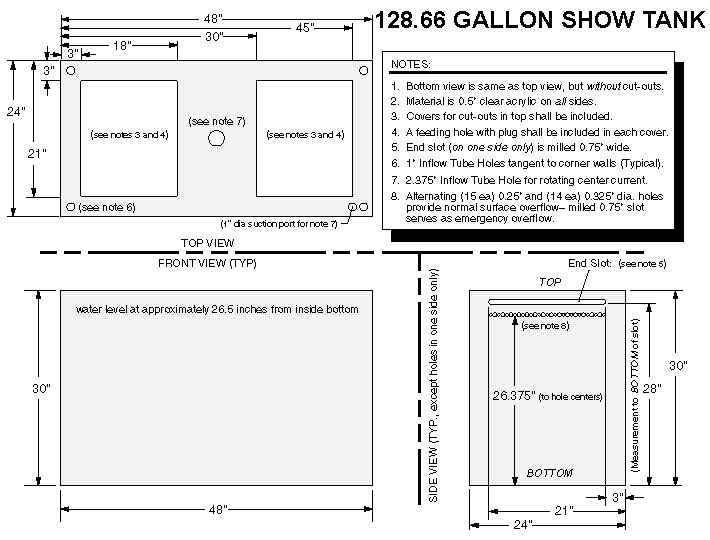

Tank Dimensions are 2' wide x 4' long x 30" tall, but the water line is
at 28" so this equates to 24 * 48 * 28 = 32,256 cubic inches which = 18.67
cubic feet. To be accurate, we should discount the thickness of the acrylic
as these are outside dimensions. The acrylic is 0.5" thick on all sides
except the surface, so the 48" dimension should really be 48 - (2*0.5)
= 47, and the 24" dimension should really be 24 - (2*0.5) = 23. The height
dimension only has one thickness of acrylic applied to it, so it is 28"
- 0.5 = 27.5.
The more accurate tank volume is therefore, 47" x 23" x 27.5 = 29,727.5
cubit inches which = 17.20 cubic feet. It is surprising how much the acrylic
affects the actual water volume (1.46 cuft!). Now none of these calculations
include the water displaced by the live rock, sand, or inhabitants (by convention).
17.20 cubic feet equates to 128.66 US gallons (liquid).
Here's where the rest of the “system” volume comes from:
Items 1 - 6 add up to: 6 + 24 + 35 + 75 + 0 + 55 = 140
Add this to the show tank volume of 128.66 gallons and you get 323.66 (roughly
“325 gallons”).